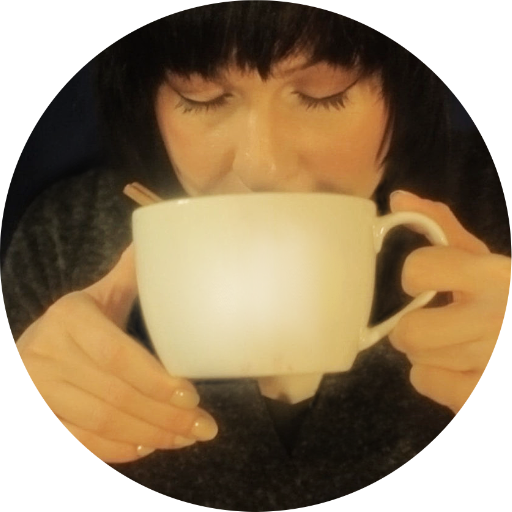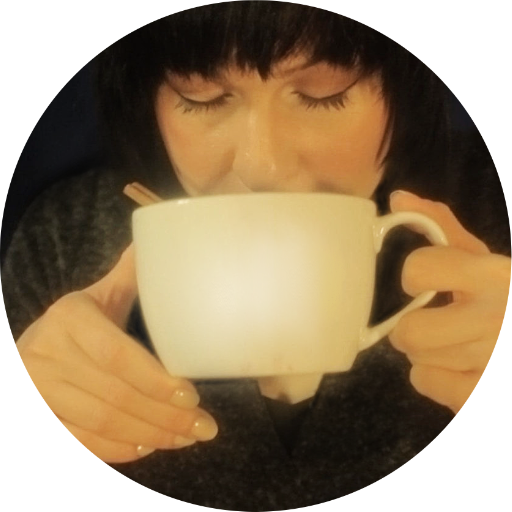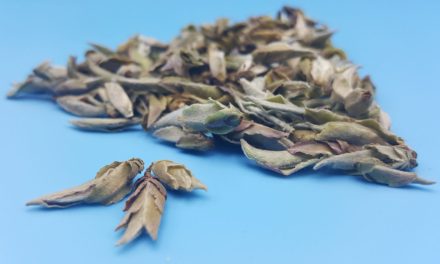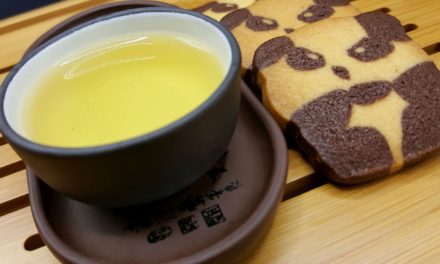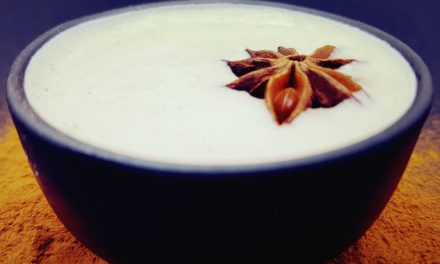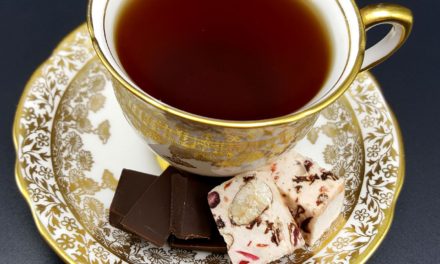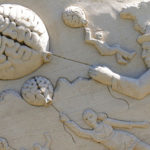Butter Sencha: The Caramel Popcorn of Green Teas
So far, Where’s Your Head‘s Tea of the Week has featured a rare winter frost tea, a Himalayan black tea, an ancient wild tree tea, and a delightful Parisian blend.
Today, I wanted to cover a Japanese green tea so good, that even people who can’t stand green tea will want to try it. I mean let’s be honest. A lot of people aren’t fond of the flavor despite green tea’s long list of alleged health benefits (by the way, weight loss isn’t one of them. Well, maybe it is. I wrote about that last June).
I suppose I can’t blame folks for their lukewarm reactions. It’s easy to screw up a cup of green. If the water is too hot or if you steep the leaves in the water for but a minute too long, you end up with an astringent brew that tastes like some jerk dropped lawn clippings in your cup.
The good news is green tea isn’t supposed to taste like a hot, bitter mess. In a moment, I’ll give you the foolproof formula to brewing a proper cup of green tea. But first…
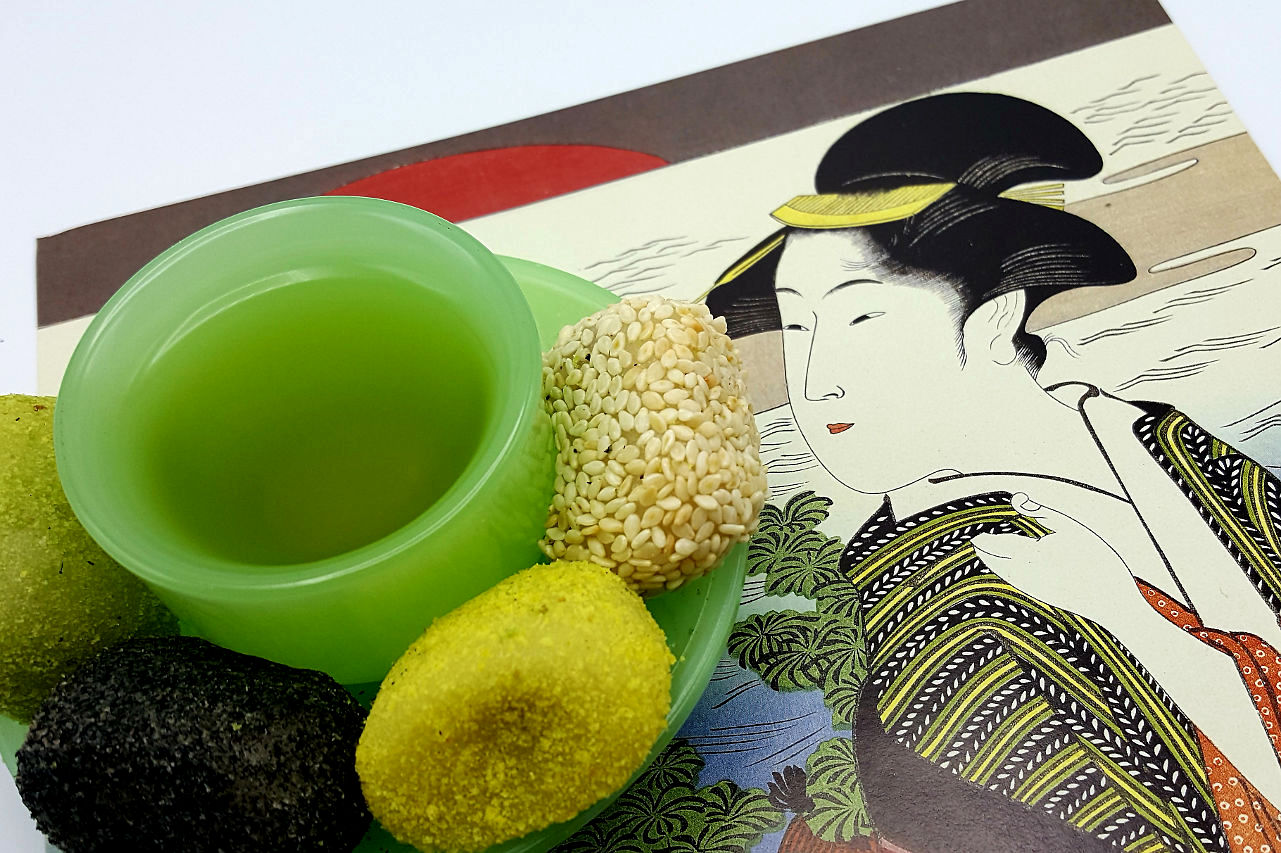
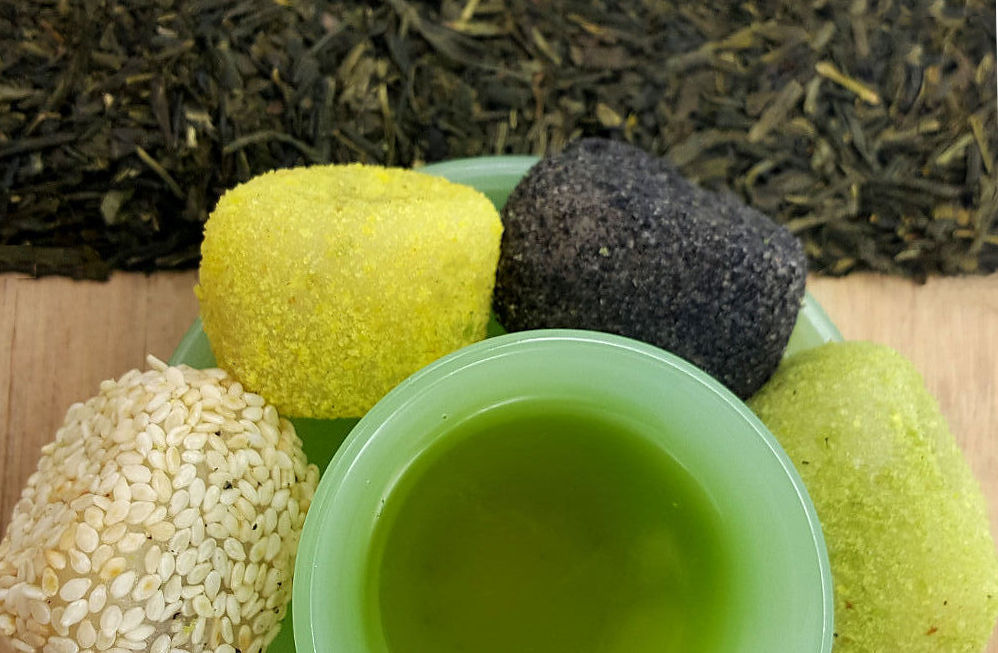
More Tea of the Week:
Above: a cup of Butter Sencha served with mochi, chewy Japanese rice cakes sometimes stuffed with filling, sweet red bean paste being one of the most common. (All photos in this post © Evelyn Reid, all rights reserved, may not be used without photographer’s explicit written permission).
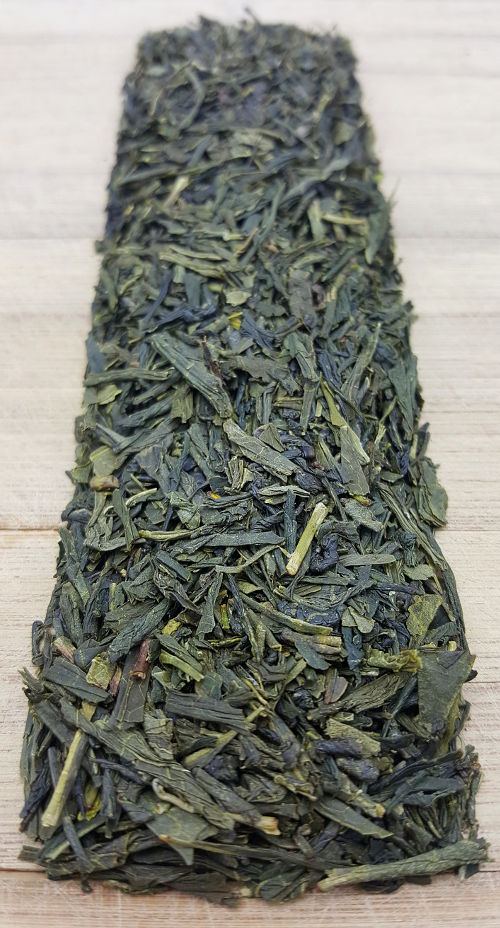
Green Tea for Haters
Even when you brew it just right, Japanese Sencha’s characteristically grassy, vegetal, and marine notes which while marvelous to some, are off-putting to others. Outside of Japan and neighboring nations, that flavor is often considered an acquired taste.
For a sweeter, mellower brew, try Genmaicha. It’s sencha with brown rice kernels –evoking Rice Krispies– mixed in with the leaves, giving the tea a toasty, popcorn flavor.
Or try David’s Tea’s Butter Sencha, a personal morning favorite of mine. I like Genmaicha. It’s a regular in my tea collection. But I find myself reaching out for Butter Sencha’s creamy green brew with a sort of childlike enthusiasm. Sipped straight, it tastes like green tea infused with caramelized butter. A few drops of stevia or a teaspoon of maple syrup brings out more caramel creaminess.
It’s like a dessert. For breakfast.
David’s Tea shops are all over Canada though trickier to find outside of the Northeastern United States, D.C., and pockets of the Midwest. They ship across North America as well. Other options include ordering Butter Sencha on Amazon.
Brewing Senchado Style
Japanese culture has perfected the green tea brew down to a science. The traditional Senchado infusion technique, for example, inspired by Chinese brewing methods and honed since the 17th century, is a little more involved and requires a special tea set crafted with the appropriate shapes and materials to efficiently cool the water.
If you’re missing the requisite paraphernalia or can’t be bothered, or don’t at least have a thermometer to check when boiled water has dropped to 75°C or 80°C, try the timer method.
The Timer Method
Brewing the perfect cup of Butter Sencha green tea doesn’t get more straightforward than this. Once the water is boiled, let the kettle cool down for at least 7 minutes before doing anything. It’s also okay if you wait a little longer than that. Just don’t cut that time any shorter than 7 minutes or you risk burning the leaves and/or bringing out bitter flavors in the tea. Better to brew your Sencha with water that’s a little too cool versus water that’s too hot.
Then, when the water is ready, pour it over the leaves and let it steep 2 minutes. Any longer than 3 minutes and the tea could, again, end up bitter. It’s tricky to time everything just right at first, but after a few tries with your smartphone timer, you’ll be a natural.

So far, Where’s Your Head‘s Tea of the Week has featured a rare winter frost tea, a Himalayan black tea, an ancient wild tree tea, and a delightful Parisian blend.
Today, I wanted to cover a Japanese green tea so good that even people who can’t stand green tea will want to try it. I mean let’s be honest. A lot of people aren’t fond of the flavor despite green tea’s long list of alleged health benefits (by the way, weight loss isn’t one of them. Well, maybe it is. I wrote about that last June).
I suppose I can’t blame folks for their lukewarm reactions. It’s easy to screw up a cup of green. If the water is too hot or if you steep the leaves in the water for but a minute too long, you end up with an astringent brew that tastes like some jerk dropped lawn clippings in your cup.
The good news is green tea isn’t supposed to taste like a hot, bitter mess. In a moment, I’ll give you the foolproof formula to brewing a proper cup of green tea. But first…
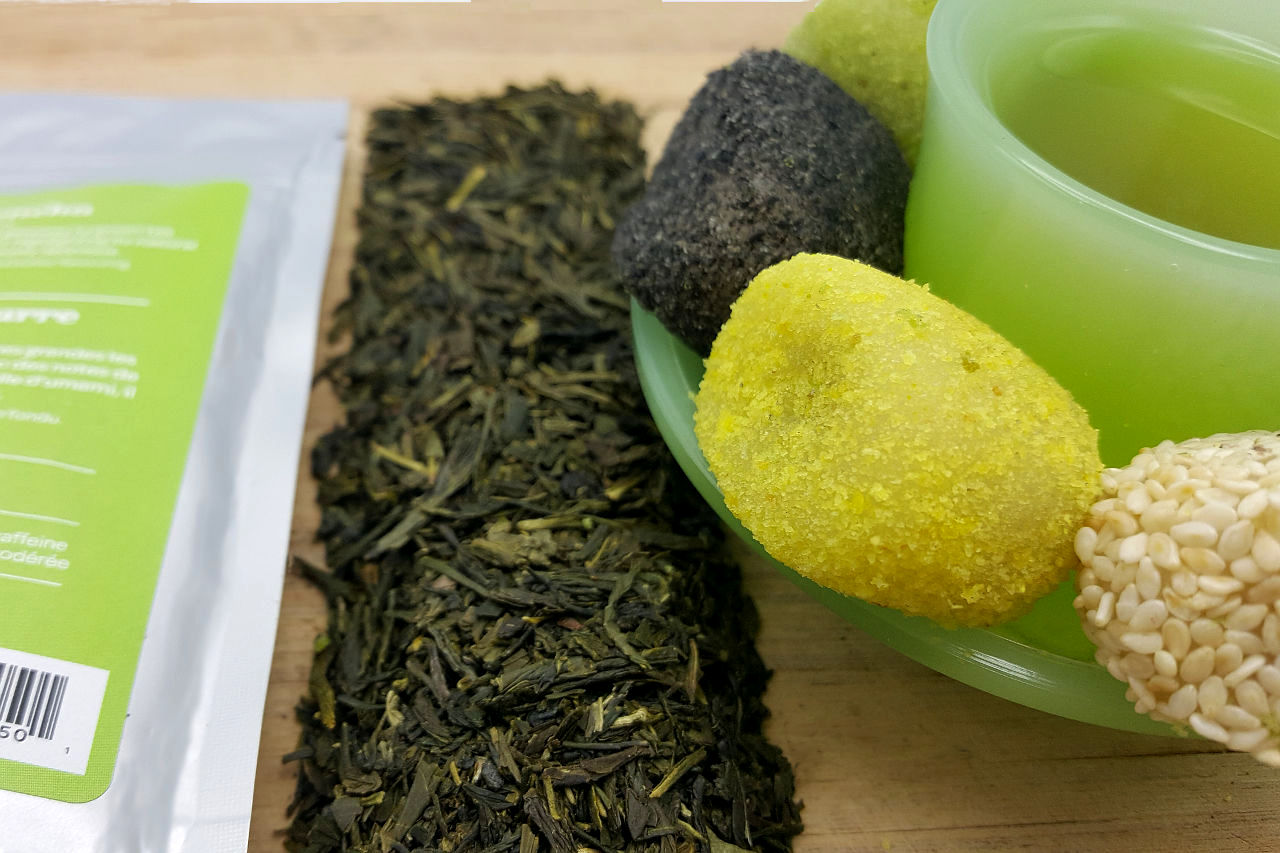
Above: a cup of Butter Sencha served with mochi, chewy Japanese rice cakes sometimes stuffed with filling, sweet red bean paste being one of the most common. (All photos in this post © Evelyn Reid, all rights reserved, may not be used without photographer’s explicit written permission).
Green Tea for Haters
Even when you brew it just right, Japanese Sencha’s characteristically grassy, vegetal, and marine notes which while marvelous to some, are off-putting to others. Outside of Japan and neighboring nations, that flavor is often considered an acquired taste.
For a sweet, mellower brew, try Genmaicha. It’s sencha with brown rice kernels –evoking Rice Krispies– mixed in with the leaves, giving the tea a toasty, popcorn flavor.
Or try David’s Tea’s Butter Sencha, a personal morning favorite of mine. I like Genmaicha. It’s a regular in my tea collection. But I find myself reaching out for Butter Sencha’s creamy green brew with a sort of childlike enthusiasm. Sipped straight, it tastes like green tea infused with caramelized butter. A few drops of stevia or a teaspoon of maple syrup brings out more caramel creaminess.
It’s like a dessert. For breakfast.
David’s Tea shops are all over Canada though trickier to find outside of the Northeastern United States, D.C., and pockets of the Midwest. They ship across North America as well. Other options include ordering Butter Sencha on Amazon.

(All photos in this post © Evelyn Reid, all rights reserved, may not be used without photographer’s explicit written permission).
Brewing Senchado Style
Japanese culture has perfected the green tea brew down to a science. The traditional Senchado infusion technique, for example, inspired by Chinese brewing methods and honed since the 17th century, is a little more involved and requires a special tea set crafted with the appropriate shapes and materials to efficiently cool the water.
If you’re missing the requisite paraphernalia or can’t be bothered, or don’t at least have a thermometer to check when boiled water has dropped to 75°C or 80°C, try the timer method.
The Timer Method
Brewing the perfect cup of Butter Sencha green tea doesn’t get more straightforward than this. Once the water is boiled, let the kettle cool down for at least 7 minutes before doing anything. It’s also okay if you wait a little longer than that. Just don’t cut that time any shorter than 7 minutes or you risk burning the leaves and/or bringing out bitter flavors in the tea. Better to brew your Sencha with water that’s a little too cool versus water that’s too hot.
Then, when the water is ready, pour it over the leaves and let it steep 2 minutes. Any longer than 3 minutes and the tea could, again, end up bitter. It’s tricky to time everything just right at first, but after a few tries with your smartphone timer, you’ll be a natural.


